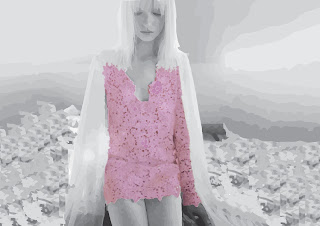Costume Plates and Fashion
Plates.
The difference between the two are the fact a
costume plate represents fashions of the past where as fashion plates represent
fashions of now and/or or the upcoming future.
Both type of plates reached
their peak in the 19th century with the first fashion plates started
in the English magazine “The Lady's Magazine” in 1770
Cabinet des Modes 1785-89 and Journal
de la Mode et du Goût 1790-93 also contained fashion plates. A few influential
fashion magazines competing against eachother were La Belle Assemblée of 1806, The Lady's Monthly Museum 1798 and
Le Beau Monde1806. La Belle
Assemblee ran for 63years owned by John Bell, the full name was Bell's Court and Fashionable Magazine Addressed
Particularly to the Ladies
In
1778 Jacques Esnauts and Michel Rapilly of Paris joined forces and began to
issue their La Gallerie des Modes publication of coloured fashion plates. They
produced 342 figure plates and 72 hat plates.
Nicolaus Wilhelm von
Heideloff created the Gallery of Fashion containing accurate copies of styles
worn by ladies of rank and fashion.
The
Repository of Arts, Literature, Commerce, Manufactures, Fashions and Politics
was created by Ackermann. It included pictures containing design elements of
furniture and artwork with special attention to classical styles. It was
significant because it may have caught the interest of refined ladies in their
home making.
Le
Follet Courier des Salons
Le
Follet Courier des Salons first appeared in 1829
Le Follet is equivalent to Vogue
La Mode was founded in 1829 by Henri de Girardin
La Bon Ton appeared in 1834
Godey’s Lady’s Book
Ladies Cabinet, The Ladies'
Gazette of Fashions and the Lady's Magazine could not compete with
their French counterparts because they
could not match the artistry of the French.
The most famous American
magazine of the 19th century was Godey's Ladies' Handbook published
from July 1830 without break until 1898.
Included inside the magazine
were fashion plates, fashion articles, stories, poems, how to make various
crochet, tatting, lace making, knitting, embroidery and other craft articles,
recipes and house keeping hints and tips.
The Queen magazine
The Queen magazine that began
in 1861 was the longest running English magazine. The full title was The Queen, the Ladies' Newspaper. It ran until 1968 then
Harpers Bazaar took it over. It was called Harpers
& Queen. The ‘Queen’ was dropped in March 2006.
It is now called Harper's
BAZAAR, to make itself an iconic international fashion brand, 50,000 London newsstand copies of bazaar were each studded with 200
Swarovski crystals on the updated new title.
More Plates
First
issue of Vogue was published in December 17th 1892
<!--[if !vml]--><!--[endif]-->
<!--[if !vml]--><!--[endif]-->
Butterick published a magazine called The Delineator
including Photos, drawings, embroidery and needle work.
<!--[if !vml]--><!--[endif]-->
Cosmopolitan was first published in 1886
<!--[if !vml]--><!--[endif]-->
I tried making a fahion plate of my own and this is how it went:













